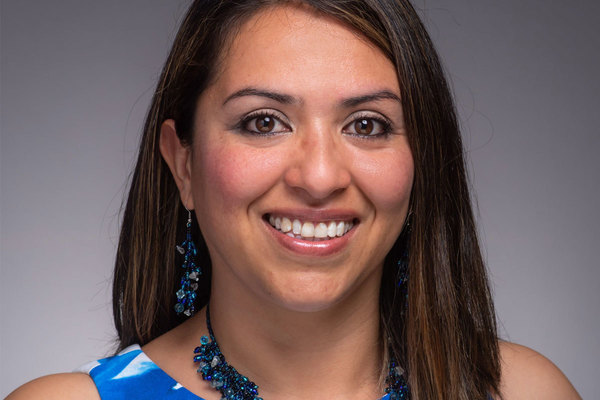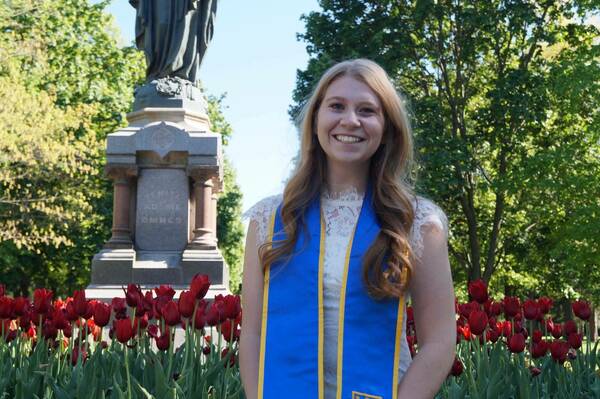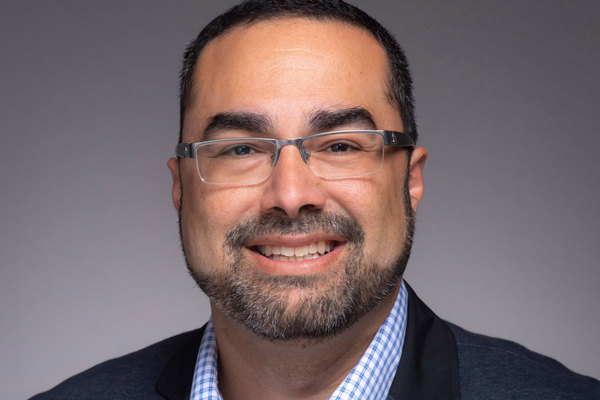Notre Dame researchers discover mechanisms that may cause catheter-associated fungal infections
A team of scientists at the University of Notre Dame has discovered the mechanisms by which the fungal pathogen Candida albicans forms infections on urinary catheters.

Ana L. Flores-Mireles, the Hawk Assistant Professor of Biological Sciences, and Felipe H. Santiago-Tirado, assistant professor, also in the Department of Biological Sciences, have combined their expertise in catheter-associated urinary tract infections (CAUTIs) and fungal pathogenesis in a new publication in Science Advances.
Their collaborative study is the first to show how the fungus Candida albicans infects the catheterized bladder. Fungal infections are difficult to treat and represent a significant and growing public health concern around the world.


Their research began, in part, when now-graduate student Alyssa La Bella, then a sophomore at Notre Dame, shared her story with Flores-Mireles and asked to work in her lab. La Bella knows first-hand the complications associated with urinary catheters. Diagnosed with a kidney defect that resulted in multiple surgeries that required catheterizations, she suffered from several Candida infections while still in high school. She was frustrated that no one could explain how or why the catheterizations led to fungal infections.
While looking at research opportunities, La Bella saw that Flores-Mireles was studying CAUTIs, and asked if she could conduct research to explore why catheterization predisposes patients to fungal CAUTIs.
“I understand the burden that patients face from these infections,” La Bella said, “and I thought that both Ana and Felipe’s drive was very inspiring.” Despite receiving offers to other graduate programs and medical schools, she decided to continue her CAUTI research in the Flores-Mireles lab, where she is currently a second year doctoral student in Biological Sciences and led the research in the Science Advances publication.
Although it is the second most common hospital-acquired infection, the mechanisms that promote infection by the Candida fungus are not well-understood. Flores-Mireles and Santiago-Tirado say that this is due to several factors, including poor criteria for diagnosis and lack of research funding into fungal pathogens.
Physicians “usually think that Candida presence in the urine or the urinary catheter is a contamination instead of a real infection," Flores-Mireles explained. “However, it’s something so many people experience, but don’t talk about because catheter-associated infections are mostly considered as a hospital complication,” she said. Santiago-Tirado further pointed out that “we all have Candida in our bodies” and for most people it doesn’t cause disease. However, in even mildly immunocompromised patients, it can become a serious problem.
In this study, which is the first to examine the of the role of fungi in CAUTIs comprehensively, the two labs conducted research using a catheterized mouse model as well as an in vitro culture system that uses human urine to study the mechanisms by which Candida causes CAUTIs. These systems, first developed in the Flores-Mireles lab, closely mimic human CAUTI conditions.
Candida becomes pathogenic when it forms filamentous structures called hyphae which can grow into a biofilm on the surface of an implanted catheter. The team discovered that two processes are required for this infection: adhesion, which requires a gene called ALS1 and formation of branched structures or filaments, which is controlled by a gene called EFG1.
This study found that Als1 interacts with a protein in the human body called fibrinogen to form biofilms on catheters. Fibrinogen is deposited on catheters as part of the body’s natural wound healing process. When either ALS1 or EFG1 is deleted, the ability of Candida to form an infectious biofilm in urine is severely compromised. This suggests that both genes are required for Candida infection, and neither is sufficient on its own. This novel finding may lead to a therapeutic for fungal CAUTIs in the future.
While bacterial infections can be treated with antibiotics, a major challenge in treating fungal infections such as Candida is that, like humans, fungi are eukaryotes, meaning that they share many of the same genes. This means that treatments that kill fungal cells are likely to kill human cells as well. In fact, there are only four classes of antifungal drugs, all of which have issues with toxicity and can be prohibitively expensive. As fungal infections become more common in hospitals, research into mechanisms of fungal infections is increasingly important.
Nearly four years into studying CAUTIs, graduate student Alyssa still enjoys her urology research, and plans to continue in the field after earning her doctorate.
Both Flores-Mireles and Santiago-Tirado say they are hopeful that this work will one day facilitate development of treatments for CAUTIs that won’t require antifungals.
“We’re really excited,” said Flores-Mireles. “There is nothing like this research anywhere.” Santiago-Tirado agreed.
“This research is as physiologically relevant as possible. It’s going to open so many doors and promote more research funding in this area,” he said.
This research was funded in part by institutional funds from the University of Notre Dame and NIH grants to Ana L. Flores-Mireles and Felipe H. Santiago-Tirado and the Arthur J. Schmitt Leadership Fellowship to Alyssa La Bella. Other authors on this paper include Notre Dame students and staff Marissa Jeme Andersen, Jonathan Jesus Molina, Alex Molesan, and Peter V. Stuckey; and collaborators Nicholas C. Gervais, Lauren Wensing, and Rebecca S. Shapiro from the University of Guelph in Ontario, Canada; and Clarissa J. Nobile from the University of California, Merced.
Originally published by at science.nd.edu on March 30, 2023.
Latest Research
- From reaction to resolution: The future of allergy treatmentTwelve-year-old Lauren Eglite was thrilled to attend a Notre Dame football game with her father, Erik, in 2017, even though her acute peanut allergy demands constant vigilance. She was even more excited when the stadium’s brand-new video board aired an NBC Fighting…
- New Study Highlights Mother-Child Link for Anemia in The GambiaAnemia is a "silent epidemic." It affects nearly 2 billion people globally, yet many people ignore its symptoms. Typically caused by the consumption of iron-deficient foods, anemia develops gradually. Its symptoms—such as fatigue, weakness, and shortness of breath—are frequently dismissed or misattributed.
- Megan McDermott joins ND–IBM Tech Ethics Lab as new Notre Dame directorThe Notre Dame–IBM Technology Ethics Lab, a critical component of the Institute for Ethics and the Common Good (ECG) and the Notre…
- Jenkins Center for Virtue Ethics receives grant to advance love-based ethical frameworkThe University of Notre Dame has received a $10 million grant from the John Templeton Foundation to support a project titled Love and Social Transformation: Empowering Scholars and Social Innovators to Develop the Love Ethic.
- ND-GAIN releases latest Country Index updateThe lastest update to the University of Notre Dame’s Global Adaptation Initiative's (ND-GAIN) Country Index is now live. The ND-GAIN team will release a second Country Index update in late Fall, which includes…
- In sub-Saharan Africa, 1 in 6 cancer medications found to be defectiveSerious quality defects were found in a significant number of cancer medications from sub-Saharan Africa, according to new research from the University of Notre Dame.












